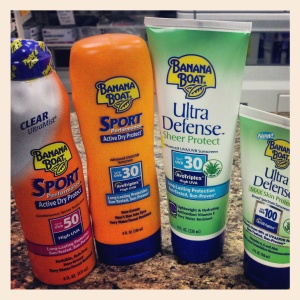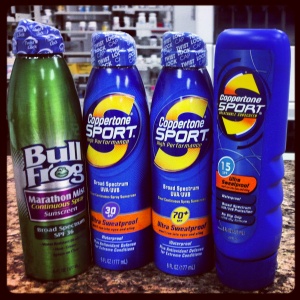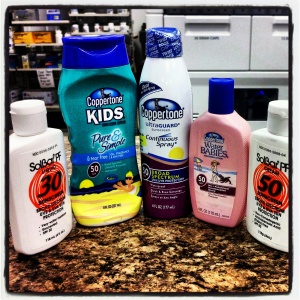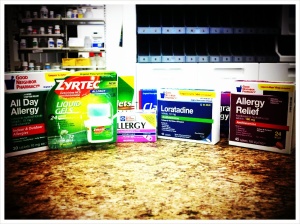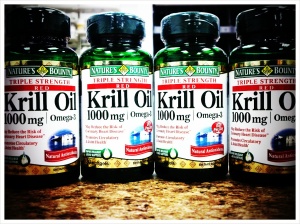If you polled the nations pharmacists about one of the biggest issues they face in pharmacy, I think most would agree that medication non-adherence is near the top of the list.
Non-adherence is also called non-compliance, and basically means that the patient does not take the medication or treatment as prescribed. When a patient does this they are considered to be non-compliant. There are many barriers to patient compliance in pharmacy and we will address some of the most common reasons a little further down in this blog.
The National Community Pharmacists Association (NCPA), estimates that non-adherence adds to the healthcare costs of this country by as much as $300 Billion each year (other researchers have estimated the amount at closer to $100 billion a year, but either number is still significant). This cost comes about because non-adherence leads to patients with more hospital admissions, more office visits, and more changes to therapy due to their refusal to take medications correctly. The most common method to treat many of the most common disease states is to use medication. Diseases that are included in these statistics include diabetes, hypertension, high cholesterol, antibiotic treatments, anti-coagulation therapy, and other chronic disease states.
A study from Temple University in “The Journal of Applied Research” By A. Wertheimer PhD, and T. Santella B.S. found these significant statistics:
-Approximately 125,000 people with treatable ailments die each year in the U.S. because they do not take their medications properly.
-14-21% of patients never refill their original prescription.
-60% of patients CANNOT identify their own medications (!!)
-30-50% of patients ignore or otherwise compromise instructions concerning their medication
-Approximately 1/4th of all nursing home admissions are related to improper self-administration of medication
-12-20% of patients take OTHER people’s medications.
-Hospital costs due to noncompliance are estimated at $8.5billion annually.
-Non-compliance occurs in 50 to 75% of patients. This rate is even higher in patients with chronic illnesses.
-Children are also less likely to comply with medication regimens because of their dependence on adult caregivers to administer their medication.
I can sit here all day and throw statistics out, dollar values (costs), and life threatening ailments that could have been prevented by proper medication compliance. I could get on my pharmacist soapbox and preach to the choir about how important it is to take your medication correctly. But ultimately the decision to take a medication the correct way still falls squarely on the shoulders of the patient or their caregiver.
Do you want to treat your disease state? Do you want to feel better? Do you want to optimize your chances to improve your life when medication is the only option left? Do you want the chance to minimize side effects? WE CAN MAKE YOUR LIFE EASIER.
So let’s talk about solutions, what can we the pharmacists at Spartan Pharmacy offer you the patient to help you achieve your health care goals? What can we do to help you remember to take your medications correctly and how can you help us to determine your barriers to compliance? We can’t be there in your kitchen doling out your medication each morning and we definitely can’t be there forcing you to take your prescriptions. But, we can come up with solutions to help you understand your treatments, plan your doses so it doesn’t affect your day, and also lower your costs when applicable.
Let’s talk about barriers to medication compliance and some of the solutions available to you in our stores.
1. You take a large volume of medications due to multiple chronic disease states. You can’t seem to remember if your took your pills, or when you are supposed to take them. You frequently double up a dose or forget doses because you are feeling overwhelmed or otherwise confused.
Let me tell you that you are not alone, this is one of the most common problems we see in our stores because we have many patients who have multiple chronic disease states and who take a large volume of medications a day to treat their conditions. We need to talk to you and figure our first if there are ways for us to decrease your medication load, or switch you to some of the new combination therapies available to patients.
Once your regimen is straightened out then we can discuss MyPak with you. MyPak is Spartan Pharmacy’s solution for patients who take multiple medications a day and who need help managing their prescriptions. By utilizing strip packaging we are able to create daily “MyPaks” for our patients in a convenient easy to use system. You tear off the strip for your morning/afternoon/or evening dose, each pak is labeled with the medications and time of day you should take them. We review your medications and determine which time of day is best for each medication and then create the ideal MyPak based on our review.
If this is something you think could help you or a loved one please contact us at any of our locations.
2. Is the cost of your medication the barrier to your treatment? If so, again, we need to talk. There are many medications that are available generically that were not previously available. Let’s have a frank discussion with your physician about what they are prescribing you. There are alternatives for most treatments that are equivalent or of equal benefit at a lower cost to you. Of course not all medications can be switched to a generic alternative and but we have the ability to search out rebate/discount cards that can help as well. We are your greatest advocate and your greatest asset. Let us do the leg work so that your physician can treat you more effectively. You will end up with better results and will feel better thus improving your medication therapy compliance.
3. You have trouble remembering to order your prescriptions or have trouble getting to the pharmacy to pick them up. In this case you are probably most like me, (yes even we are non-compliant at times) I forget to reorder meds or don’t have time to pick them up. We offer a simple and convenient solution for this. Auto fill and free delivery from our stores. We can set up your regular medications to be filled automatically each month. When we get your order ready we will call you, and then if need be we can arrange for delivery to your home. Along with that we also will know when you run out of refills and can automatically fax/call/e-script your physician for additional refills. All that is required of you is payment for the item and making sure you take your medication as prescribed.
4. Medication side effects (adverse effects) which decrease your desire to take the medication because it interferes with your day to day life. Many medications cause side effects, some are less desirable than others. Some medications affect individuals more than others. If you are dealing with undesirable side effects from your medication you need to tell your pharmacist or your physician. There are usually options or methods available that we can recommend to help alleviate those symptoms or we can recommend a medication change to your physician. Remember we don’t know you are having an issue with a medication unless you tell us.
Are there other reasons why you are not taking your medication as directed? If so please bring them to our attention. Maybe the problem you are having is more common and easy to address than you think. As pharmacists we are trained to be experts in regards to medications, this is what we went to school for. Make sure you speak up. Ask questions when you don’t understand something. We are here to help you because we care about your health. The last thing we want is for our patients to be a statistic. We take pride in our ability to serve our customers better than any of our competitors. One of the best gifts we can offer you is a medication regimen that you are comfortable with, that meets your health care goals, and ultimately improves your life.


